July 7-11, 2018
We knew that the mountain Denali was sometimes visible from the road from Fairbanks so we kept our eyes open and the camera ready during the 123-mile drive. We got lots of pictures of bugs on the windshield, but no glimpse of the mountain.
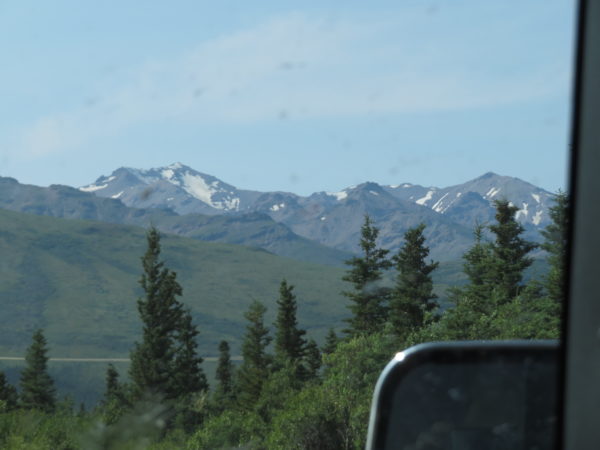
Not Denali
We checked the weather forecast repeatedly and it looked as if the only day we could expect anything other than clouds was the day of our arrival. Accordingly, we set up the coach in a private campground (we are too big for any campground in the park) and took the Jeep to the park’s visitor center. At this time of year, private vehicles are allowed on only the first 15 of the 92 miles of road into the park, and we wanted to get as far into the park as possible. Options for seeing the park include transit buses (no narration but the driver stops for wildlife and does comment), tour buses (narrated with a theme), Discovery Hikes (participants take a transit bus to a specified location and meet a ranger for an off-trail hike), and ranger-led programs. The only choices available to us Saturday afternoon were transit buses. We purchased seats on the one that went farthest, in this case to Toklat River, about 53 miles along the road from 5:30 p.m. to 11:30 p.m.
We had a couple of hours before we boarded so we drove the park road as far as allowed. We got our first glimpse of the mountain Denali but we had to look carefully.
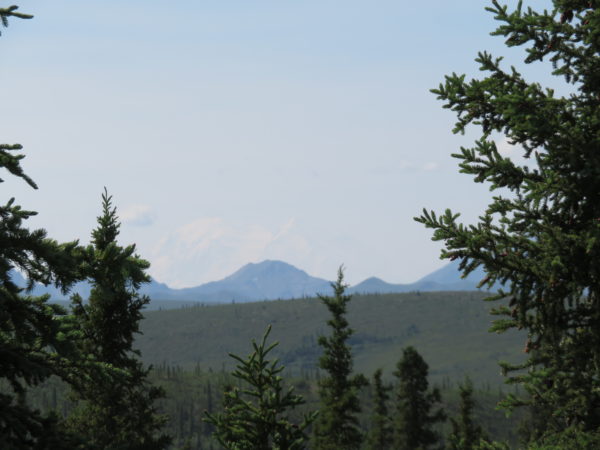
Denali is barely visible beyond the gray hills.
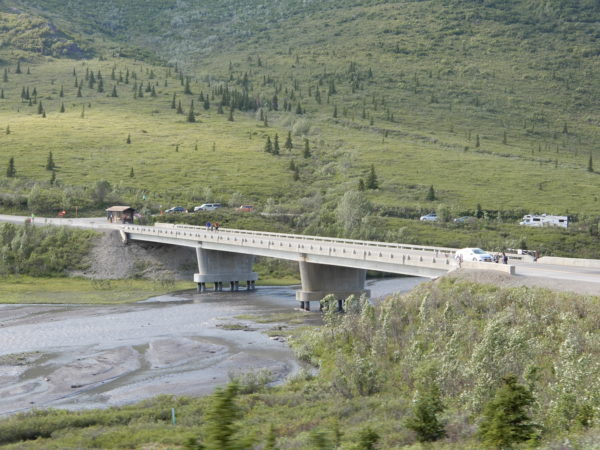
This bridge over the Savage River is as far as private cars can drive.
Transit Bus Trip to Toklat River
Our trip by transit bus to the Toklat River was a wonderful introduction to Denali.
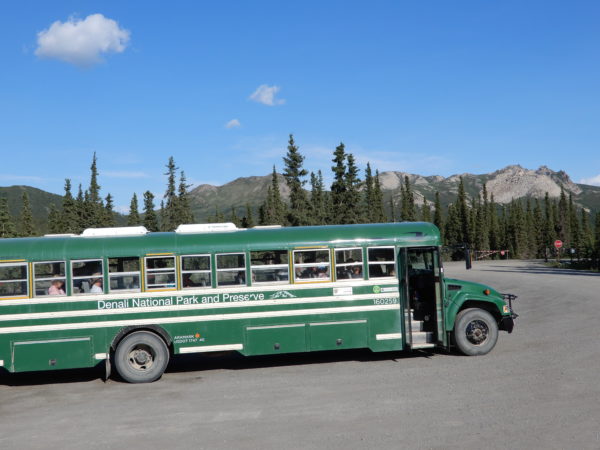
Our bus
Bus transportation, however, was not without its drawbacks.
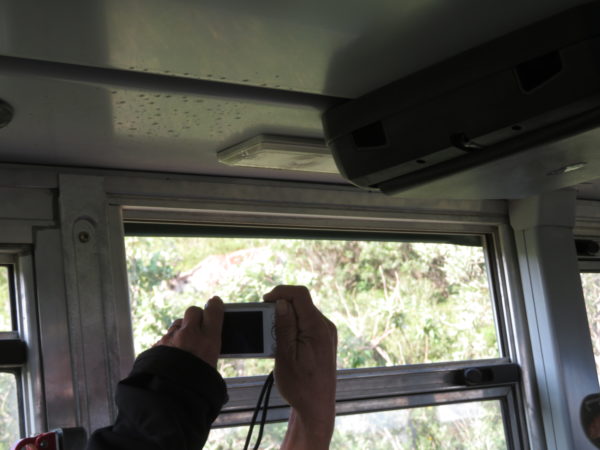
This is the picture we got
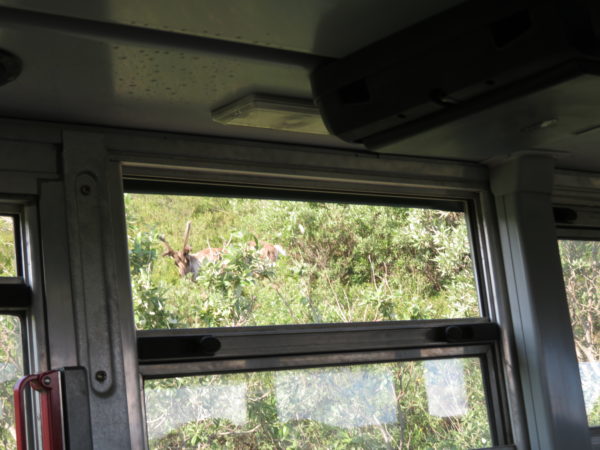
This is what we were trying to capture. (Well, the caribou, not the window!)
We enjoyed hours of pre-twilight because sunset was so late.
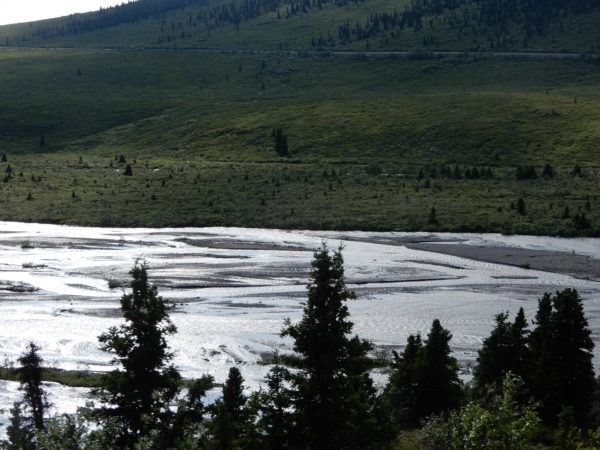
The Savage River in the late afternoon
When we got to the checkpoint at Savage River, a ranger boarded the bus to welcome us.
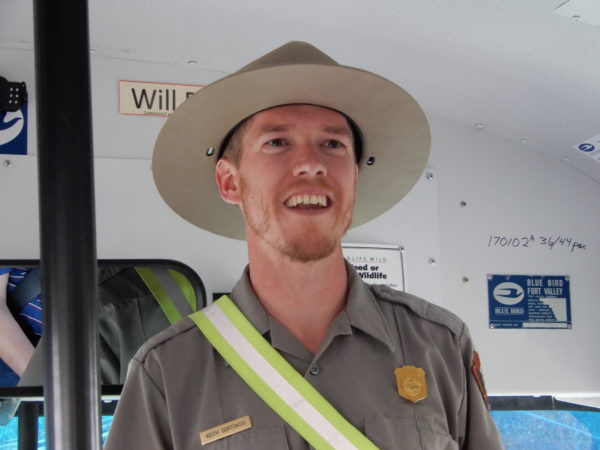
We thought Ranger Keith’s welcome was warm and genuine.
We saw four of the five large mammals: Dall sheep, caribou, moose, and brown bear. (We never saw a wolf.) Here are the best of the animal pictures–from all of our trips into the park.
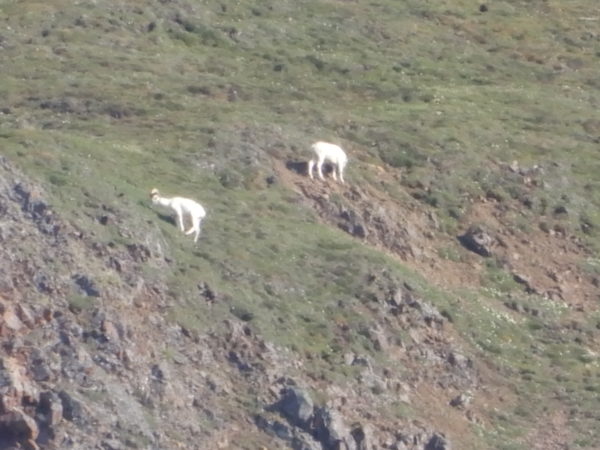
The Dall sheep we saw were far up the mountainsides. Look at the precarious posture of the sheep on the left!
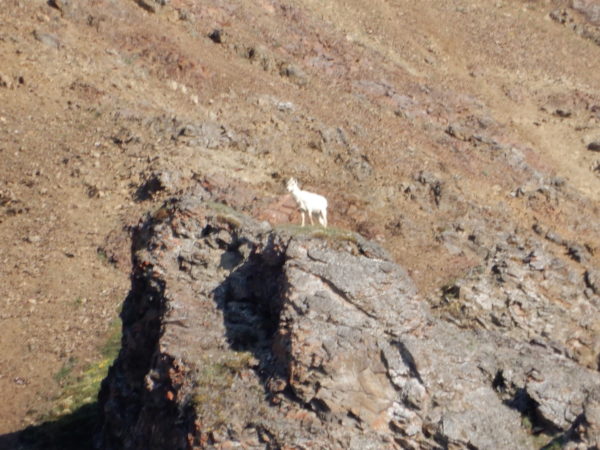
Here’s a ram looking things over.
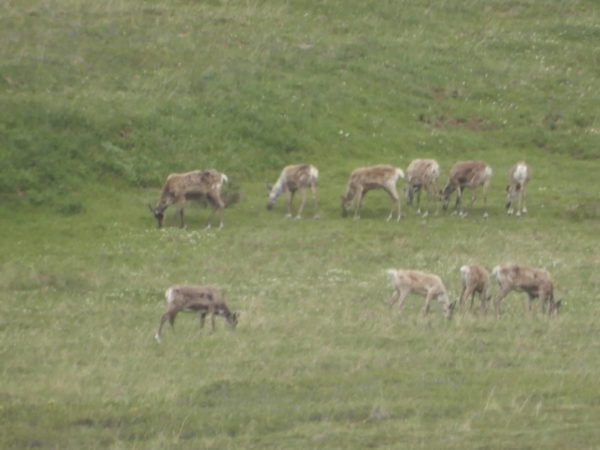
A herd of grazing caribou
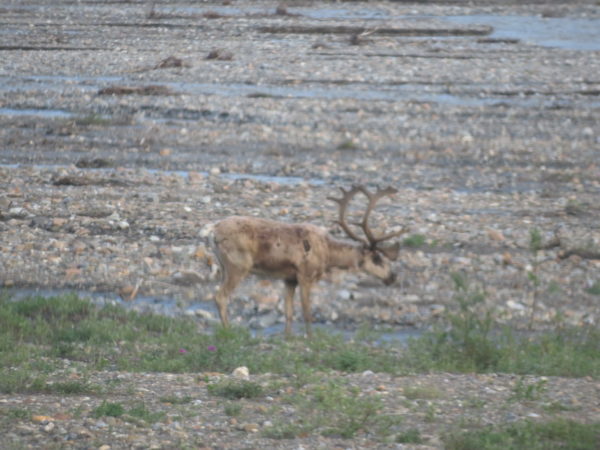
A caribou by the river. We liked how symmetrical his antlers were.
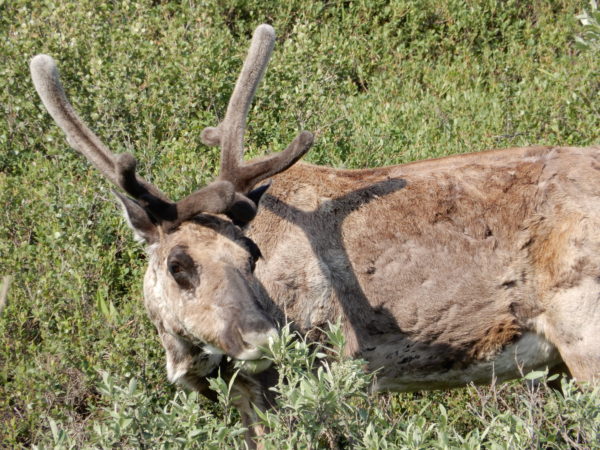
A caribou resting not too far from the road
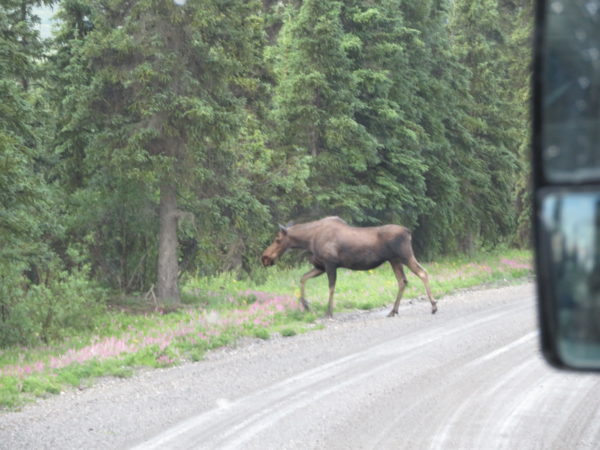
Why DID the moose cross the road? To give people on both sides of the bus a view.
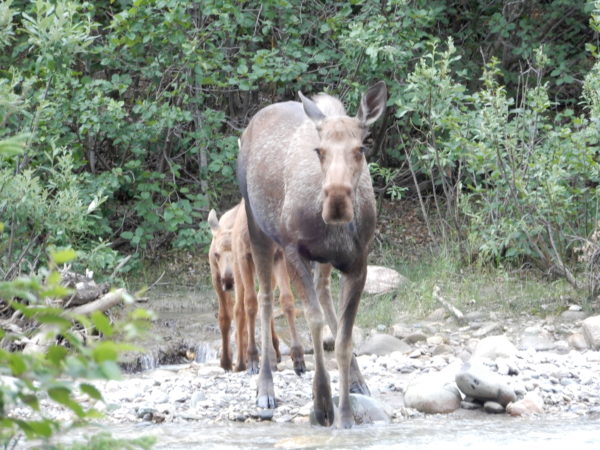
A cow and her twins
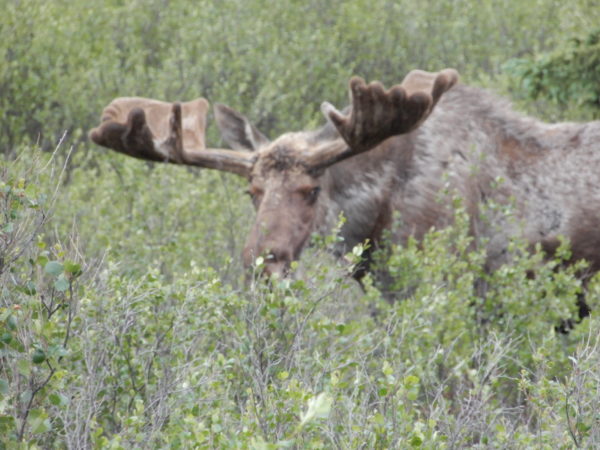
A bull feeding on grass
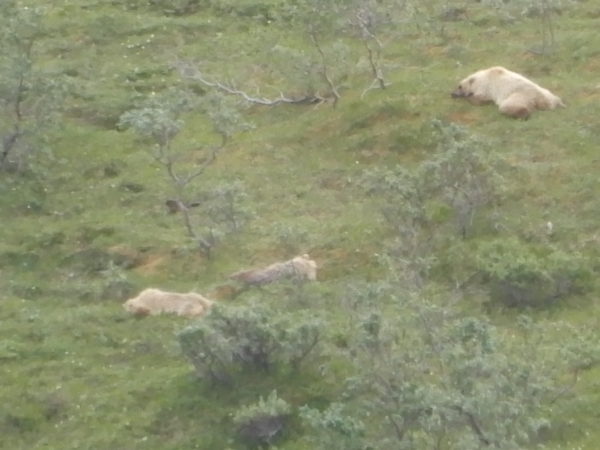
Taking care of twins must be exhausting for this sow.
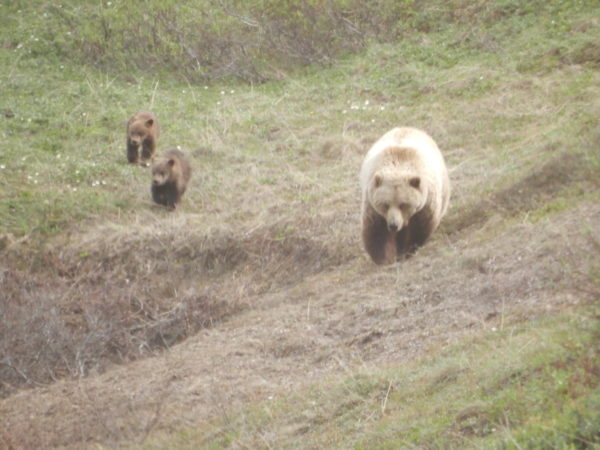
This mama is much lighter in color than her babies.
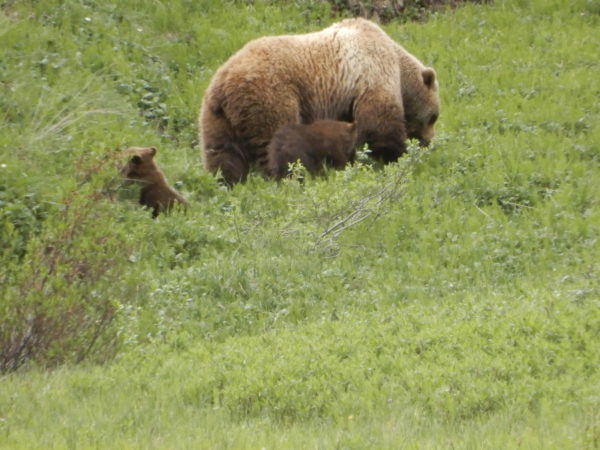
Twins staying close to their mom
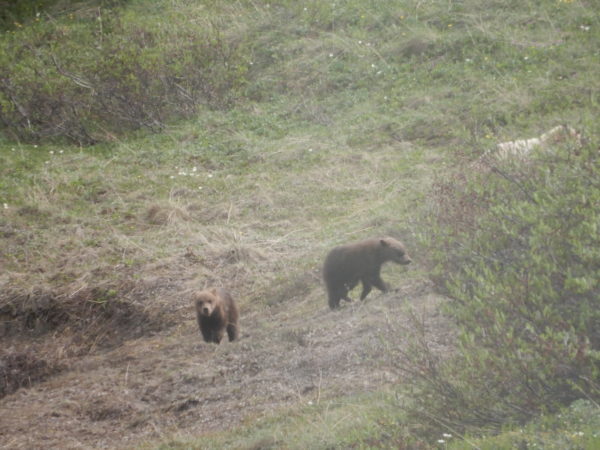
Cubs!
We watched a litter of foxes play near their den but they were too fast for the camera.
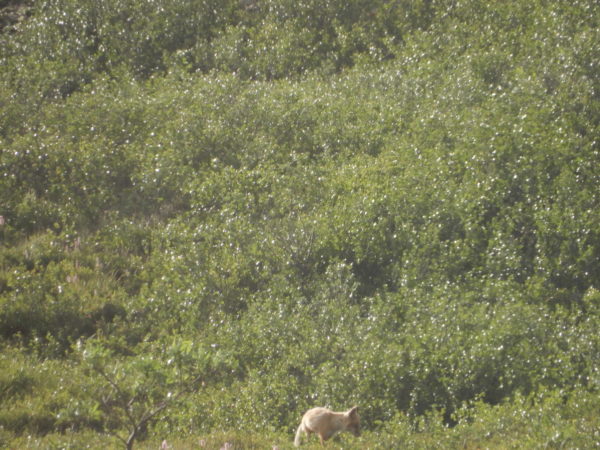
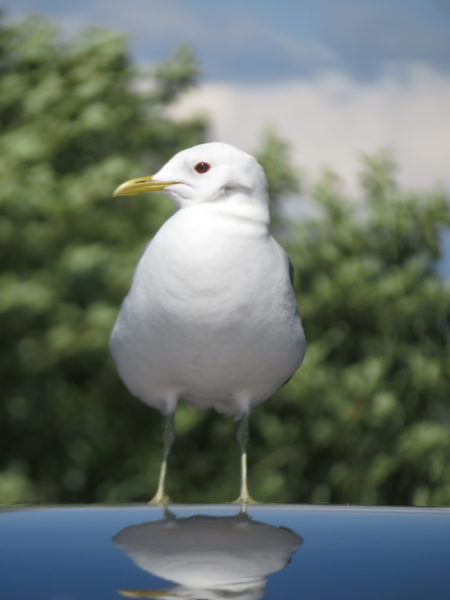
We were surprised to see a shorebird so far inland, but here is a gull on a car at Savage River.
The bus stopped at Polychrome Pass where colorful rocks were created 50-100 million years ago by flows of molten lava and hot ashes. The lighter rock is rhyolite; the darker rock is basalt.
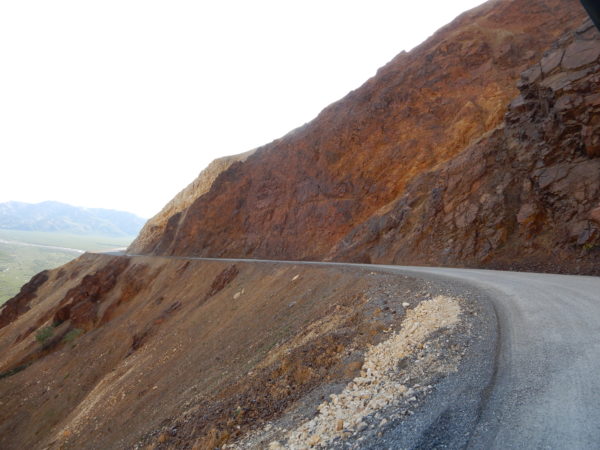
The road getting to Polychrome overlook
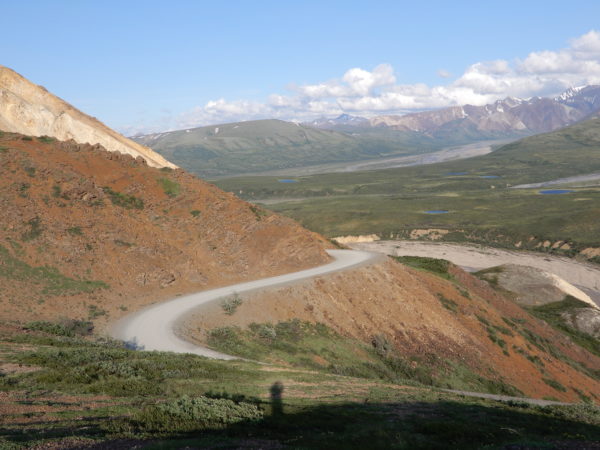
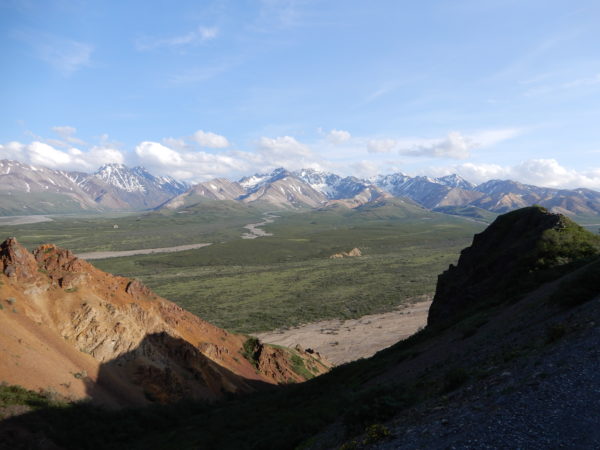
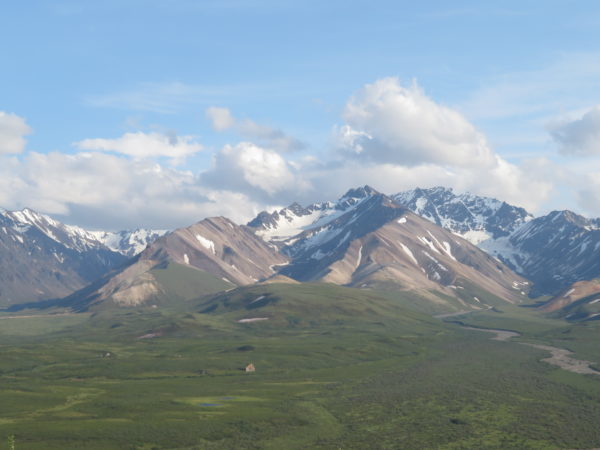
The rock in the foreground of this photo is an erratic–it was left by a glacier
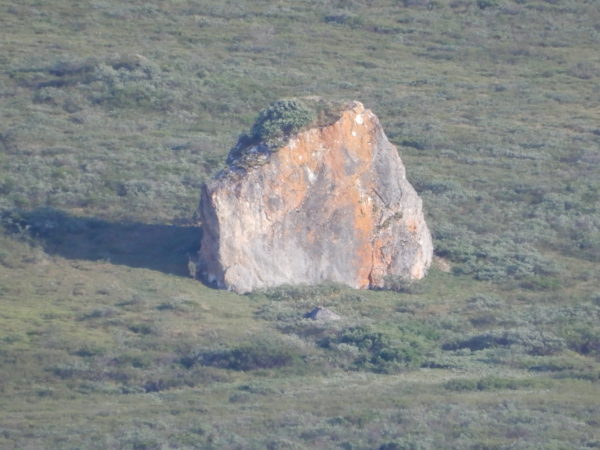
This erratic is 35 feet high–it’s the size of a house.
The turn-around spot at Toklat River had antlers to explore.
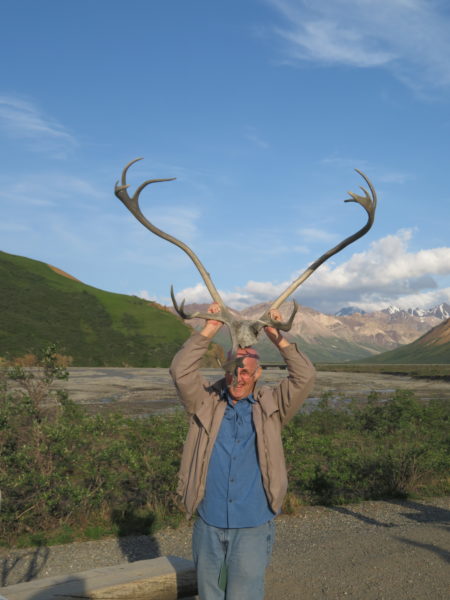
Dave with caribou antlers at the Tolkat River stop
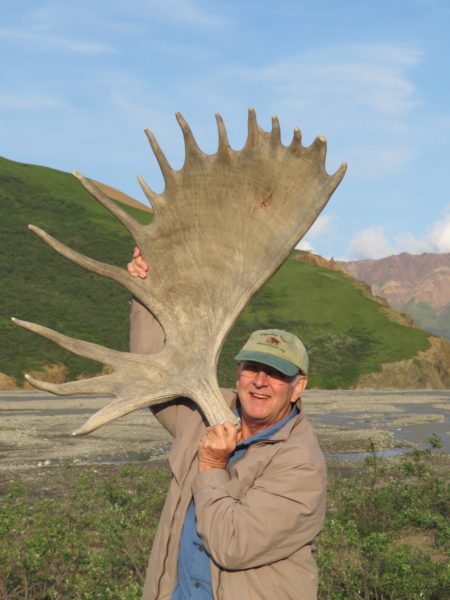
This moose antler was HEAVY. Moose must have very strong necks and backs.
We were treated to sun on Denali on our return drive. We were told only one-third of Denali’s visitors actually get to see the mountain.
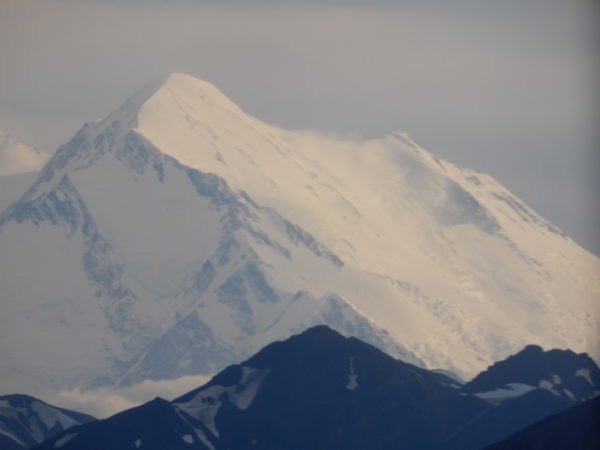
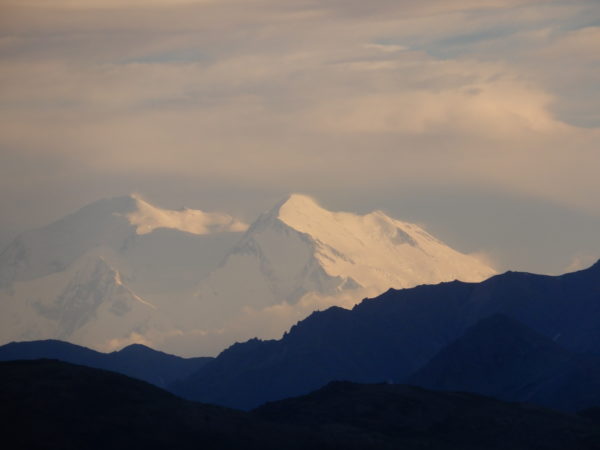
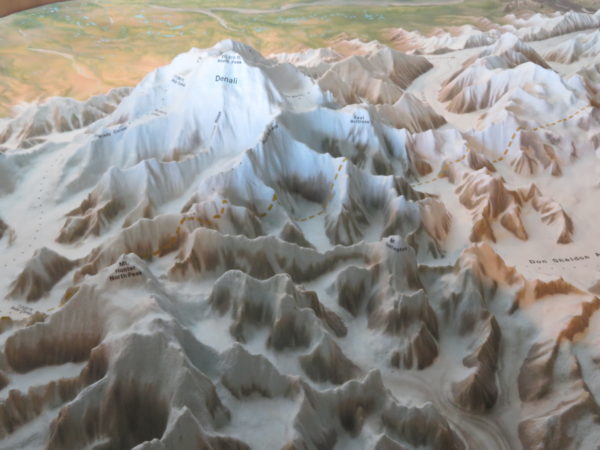
Scale model from the Visitors Center showing Denali and surrounding features
Webs of Life Ranger-led Program
This program was offered at the Visitors Center and was led by Ranger Keith who had welcomed us on our bus trip to Toklat River. There were about 30 participants of varying ages on this exploration of how things in nature are connected.
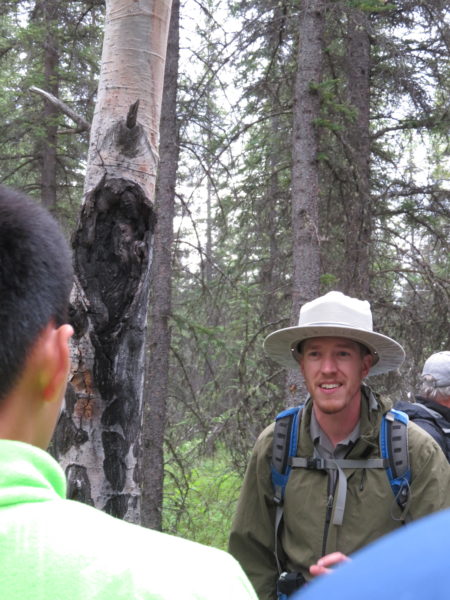
Ranger Keith explained how a moose had rubbed against this tree to remove the velvet on his antlers.
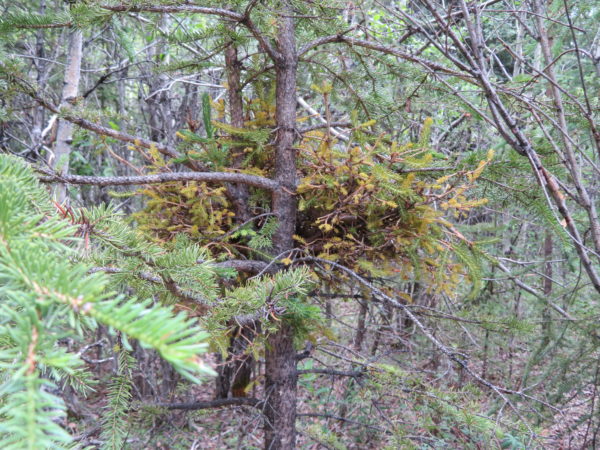
We asked about witch’s broom which we’d seen on trees in Canada. It’s a mass of shoots growing from a single point and is the result of a pathogen.
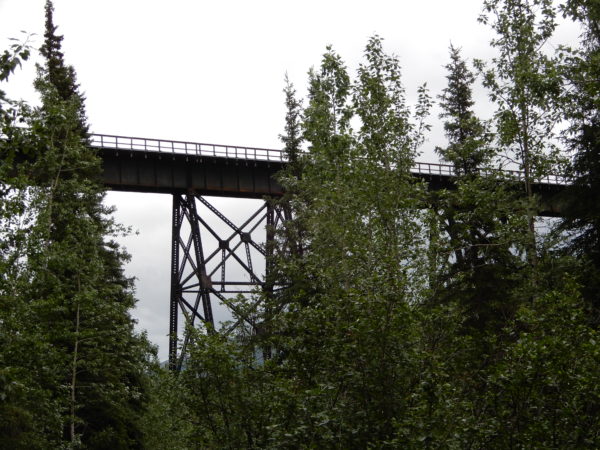
Train trestle. Park visitors can take the train from either Anchorage or Fairbanks.
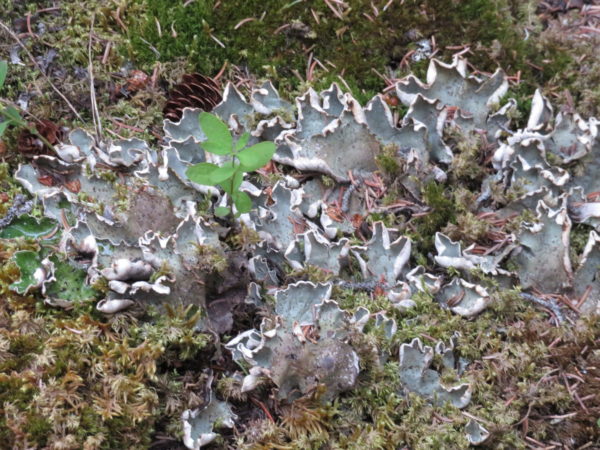
Lichen, a combination of fungus and algae
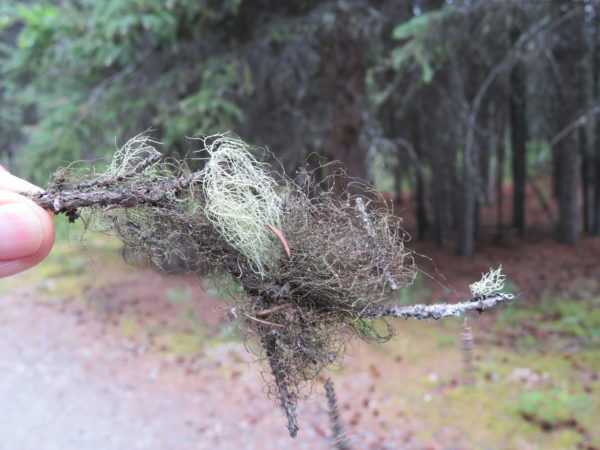
Ranger Keith explained these were lichens Old Man’s Beard (white) and Hag’s Hair (dark) growing beside each other.
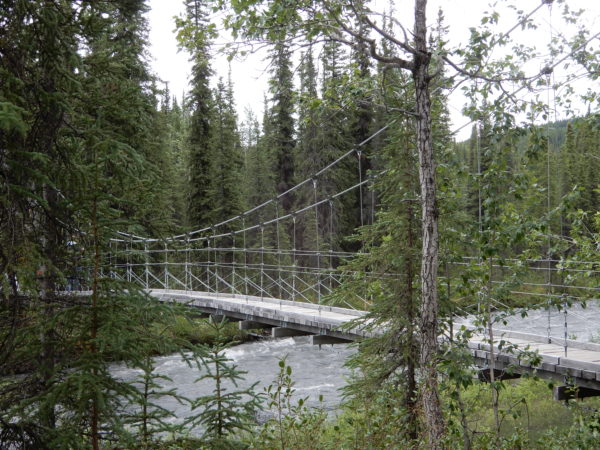
Suspension bridge
The Visitors Center itself had some wonderful exhibits. One of our favorites was this comparison of the growth rings for white and black spruce. The larger tree ring is white spruce, 57 years old and grown in a moist environment. The smaller tree ring is black spruce, 63 years old and grown in a drier environment.
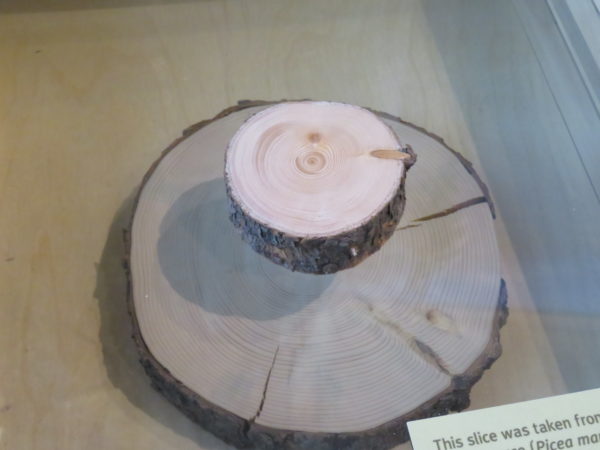
Savage River
We drove out to Savage River again, stopping on the way at Savage Cabin. The cabin was built in 1924-25 and served as a cookhouse during summers while the road was being constructed. In winters it was used as a ranger patrol cabin. Today it is used by rangers who patrol the park, both summer and winter.
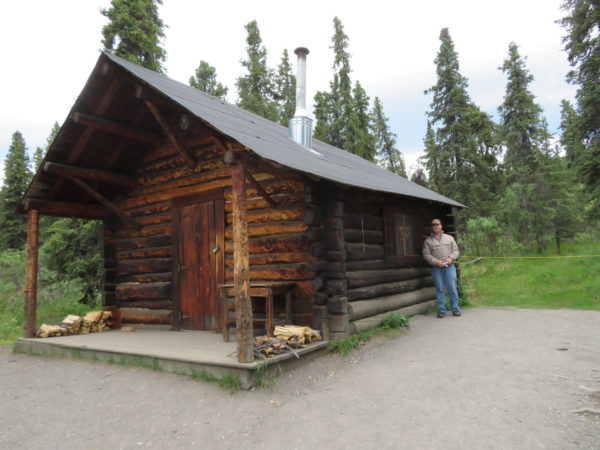
Savage Cabin
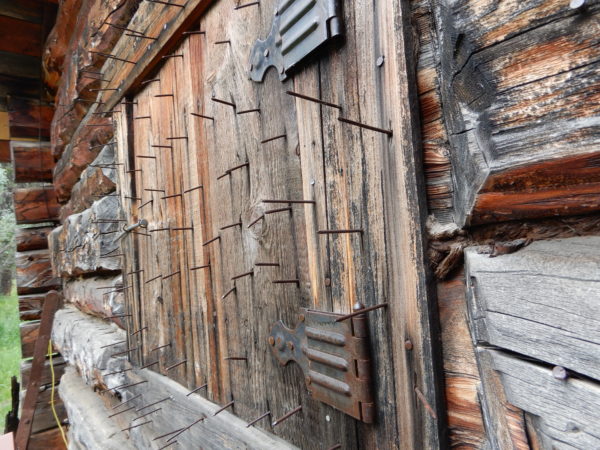
Windows are studded with nails to discourage bears.
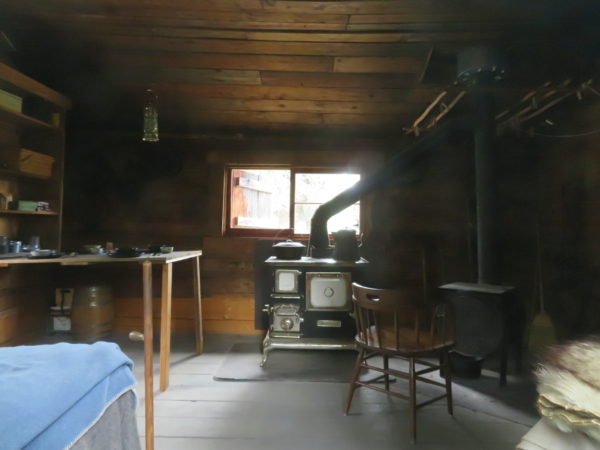
Cabin interior
Here are three views of Savage Rock, schist that for some reason was more resistant to erosion than the rock surrounding it. We found it striking.
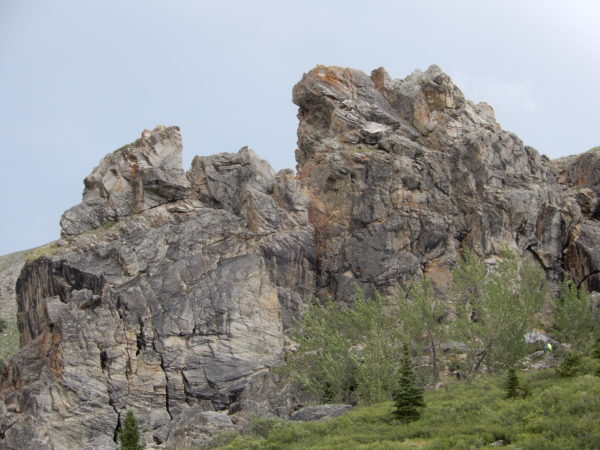
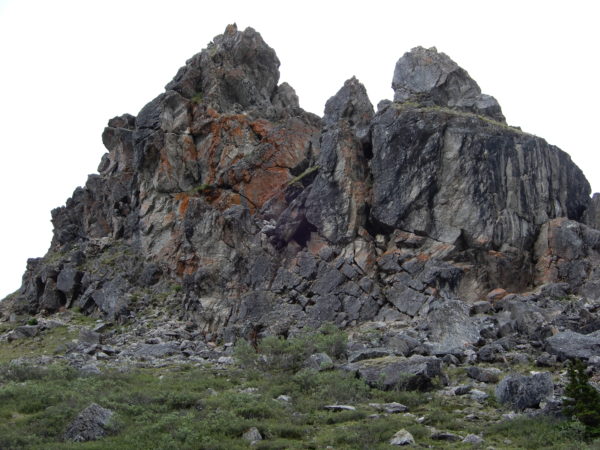
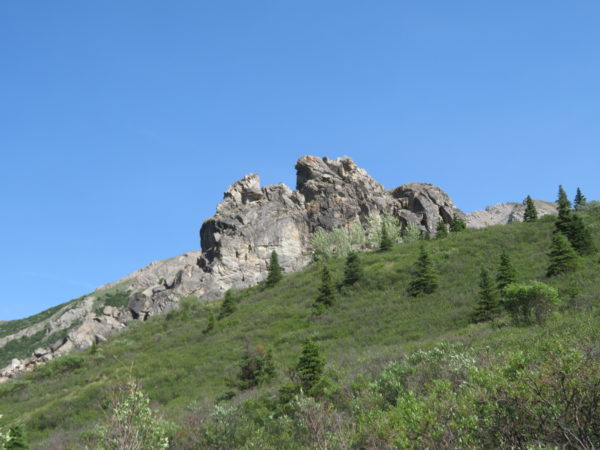
Kantishna Experience
Our longest adventure was a narrated trip to the end of the park road where Kantishna, a mining village, was settled in 1905. Fannie Sedlacek was a veteran of the Klondike and other stampedes and she arrived in the area with her portable stove, ready to feed miners. She married Joe Quigley who was one of the first to stake a claim in the area. Together they worked claims and provided for themselves until the 1930’s when Joe moved to Seattle. Fannie lived in Kantishna until her death in 1944. A superintendent of the park said Fannie was a “dog musher, prospector, trapper, hunter, woodcutter, gardener and one of the best sourdough cooks I have ever run across.” We visited her cabin.
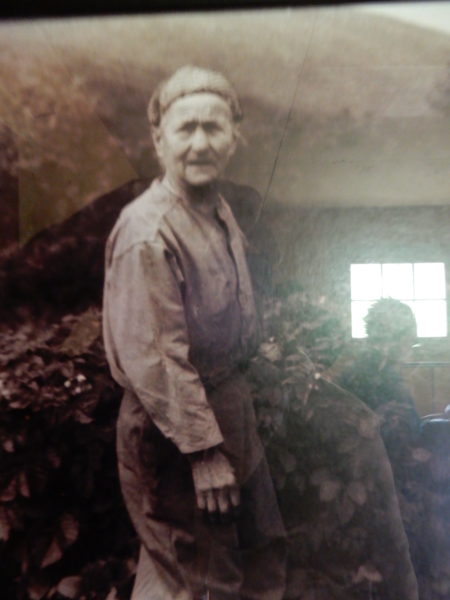
Fannie Quigley
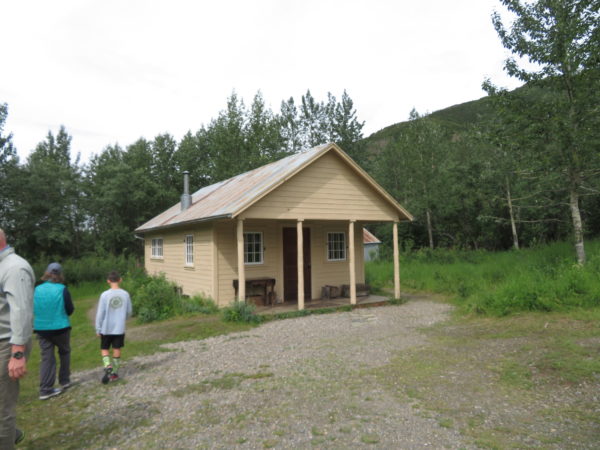
Fannie’s cabin
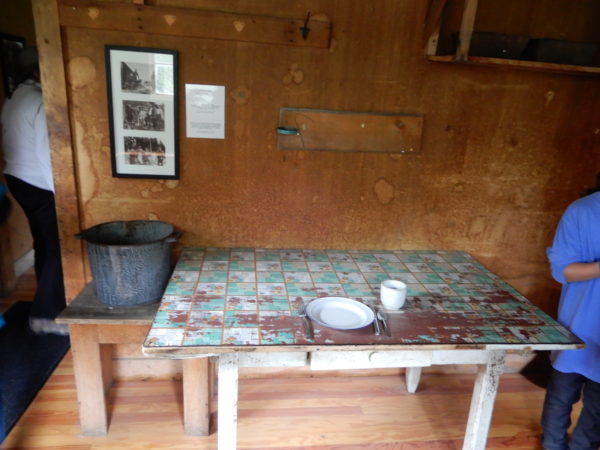
Fannie’s kitchen
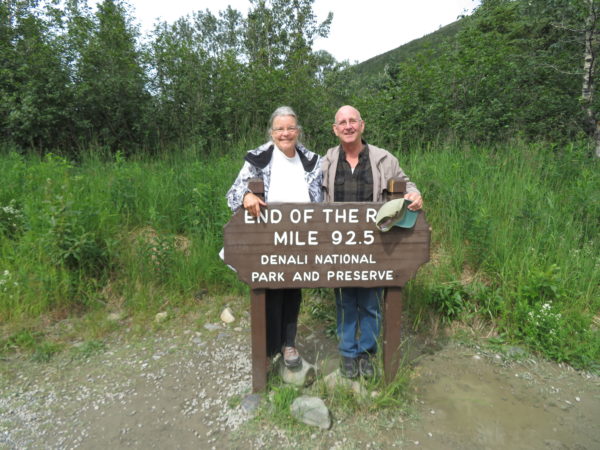
Discovery Hike
When we registered, we were told our hike would be about 2.8 miles long, was rated moderately difficult, and included river or stream crossings. We gathered as much of the equipment list as we had (we were missing gaiters) and packed lunch, water, and snacks. A designated transit bus took us about 60 miles to Highway Pass where we and nine other hikers met our ranger, Anastasia. She is the daughter of a geologist and a Denali ranger and literally grew up in the park. Ana and this hike gave us an enhanced appreciation for the concept of wilderness.
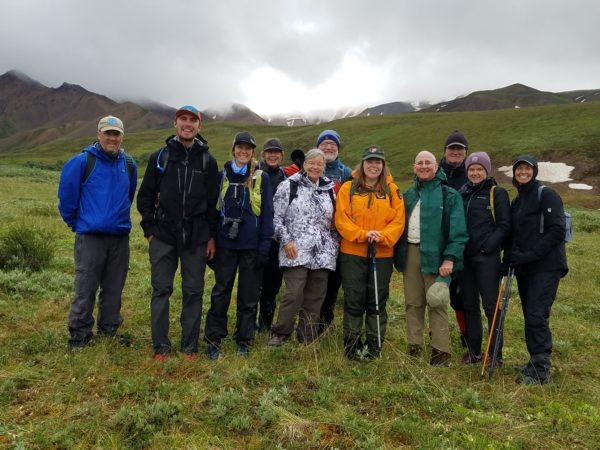
The road corridor is 300 feet wide. Backcountry hikers and those wanting to climb Denali must have specified equipment and follow procedures that minimize their impact on the park. Beyond that, the park is left to itself. The park service strives to be a guardian, not a gardener. No attempt is made to manage wildlife populations by limiting predators, moving animals, or offering medical treatment.
Rangers reminded us of appropriate behavior if we found ourselves close to wildlife. (Look big and make noise for bears, run in a zig-zag pattern from moose.) We saw bear scat several times on our hike with Ana, and she helped us evaluate how fresh the deposit was so that we could avoid getting too close to a bear.
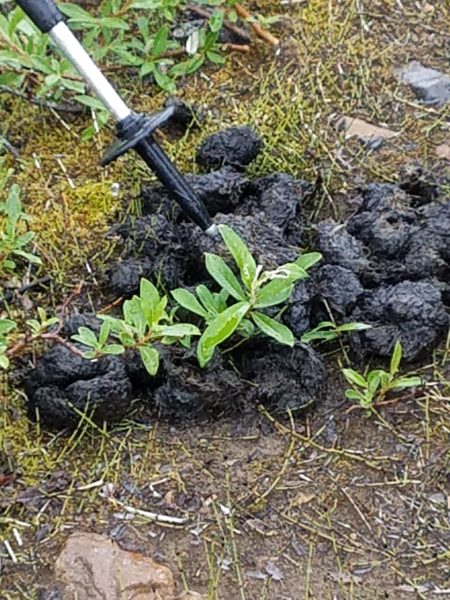
This bear scat was relatively (not immediately) recent.
After we noticed park buses stopping on the road in greater numbers and with more frequency than usual, we adjusted our route. We surmised, and park administration confirmed via satellite phone, that a bear had made a kill nearby. We didn’t want to be mistaken for predators threatening to take the kill.
The weather the day of our hike was not unusual for Denali: Cool and wet, in this case about 50 degrees and constantly drizzling. Here are images from the hike.
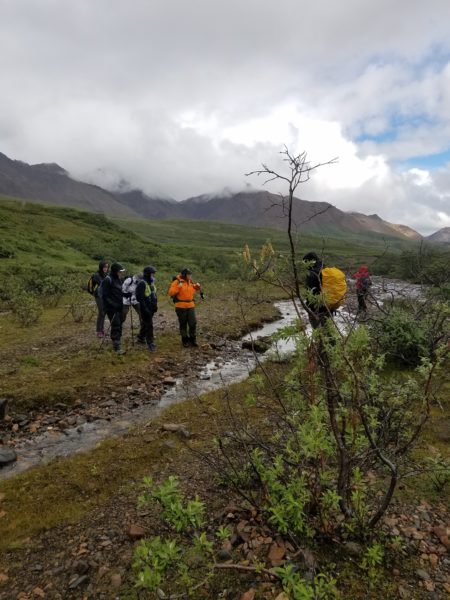
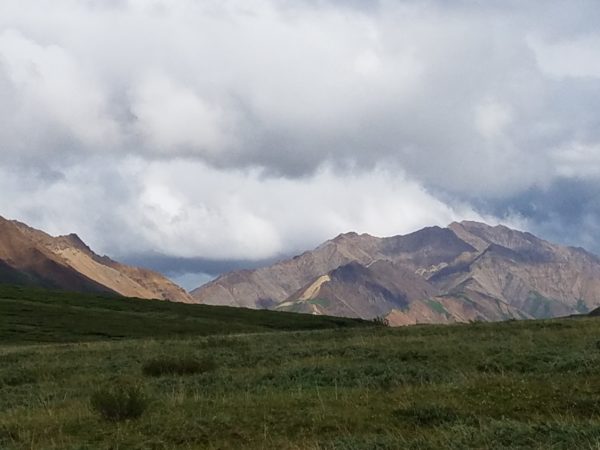
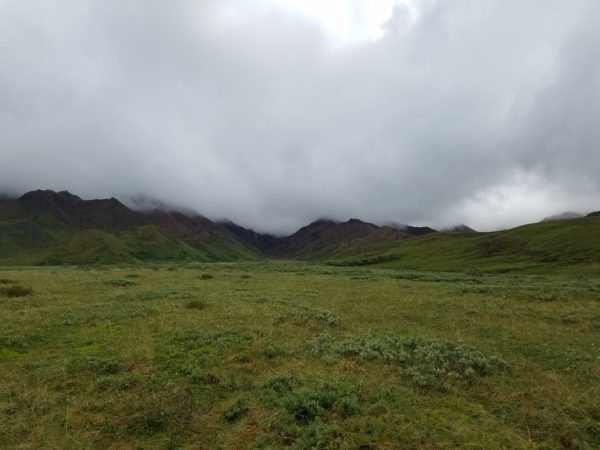
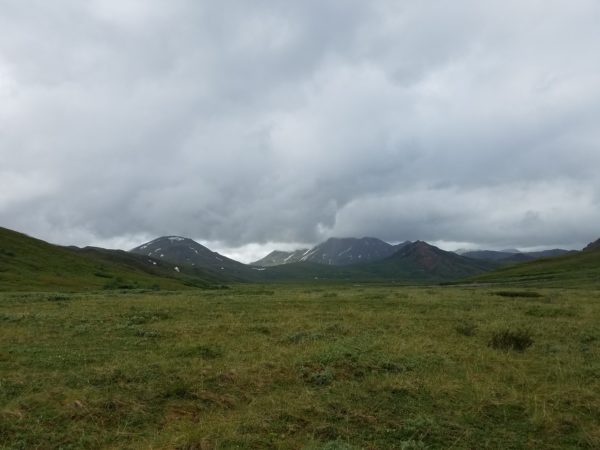
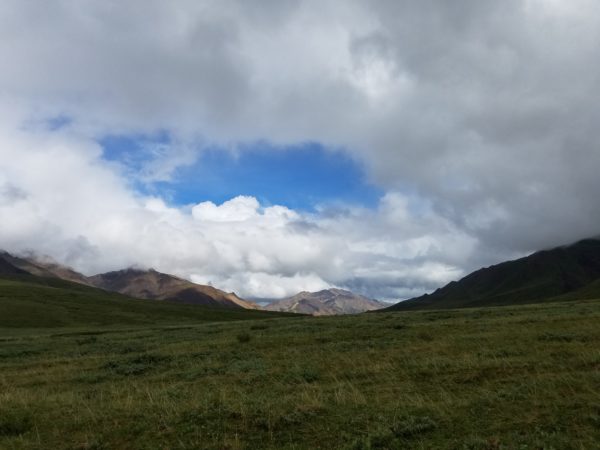
Flowers and plants on the tundra were small but wonderful.
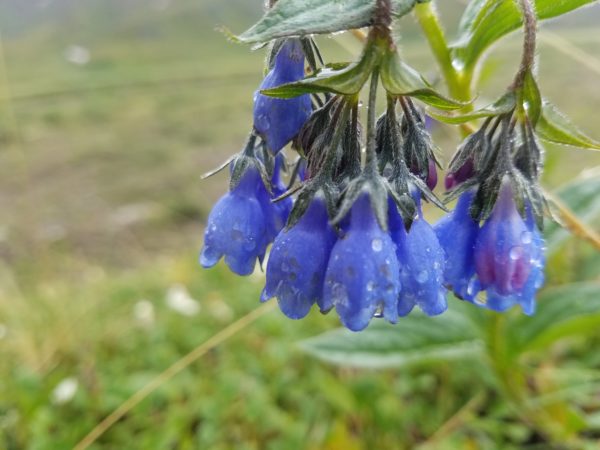
Tall bluebells
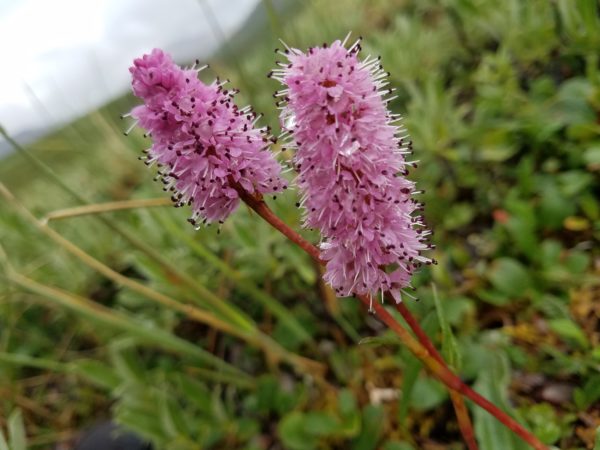
Bistort
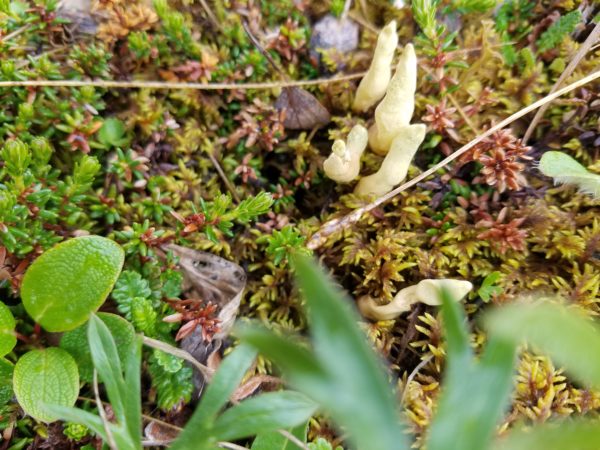
This is a fungus called dead man’s fingers.
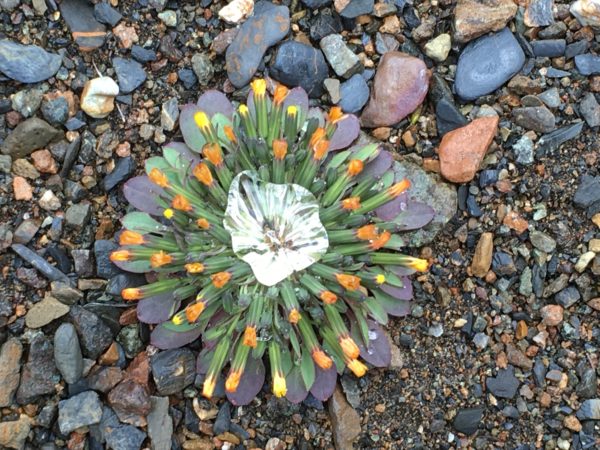
The center of this dwarf alpine hawksbeard is full of water.
Park History
Charles Sheldon, a hunter and conservationist, studied Dall sheep in the area and witnessed wide-scale market hunting that threatened the sheep population. He lobbied Congress to establish the park and, in 1917, after ten years, two million acres were set aside as Mt. McKinley National Park. Since then, Park administration has straddled the line between use and conservation.
The park road was constructed between 1922 and 1938, going no closer than 27 miles to the mountain.
Visitation to the park has increased as highways outside the park have made it more accessible and more people are seeking wilderness experiences. The park hosted 5,000 visitors in 1956, 44,528 visitors in 1971 and 88,615 visitors a year later. The shuttle bus system was instituted in 1972. Limiting the number and timing of vehicles gives animals space to cross the road and maximizes visitors’ experience of being in the wilderness.
The park was renamed in 1980. The original two million acres were set aside as wilderness and an additional four million acres were added to protect Denali and preserve the habitat of area wildlife. In 2015 the name of the mountain was returned to the one natives used, Denali (the high one). The mountain is 20,310 feet and is North America’s highest mountain.
Harry Karstens was the park’s first superintendent. (Coincidentally, he was the guide and climbing leader for the team that first successfully climbed Denali.) We’ll close with his quote.
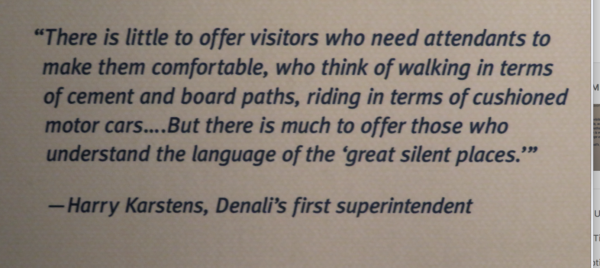
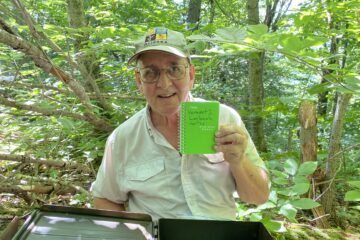
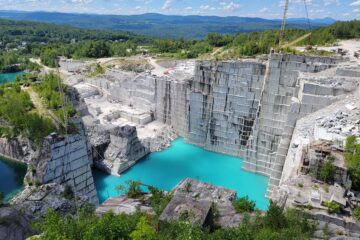
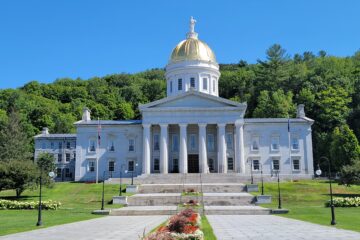
0 Comments